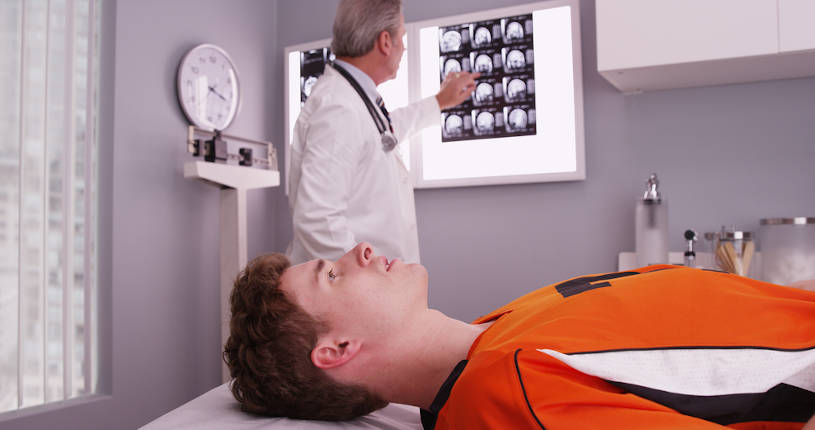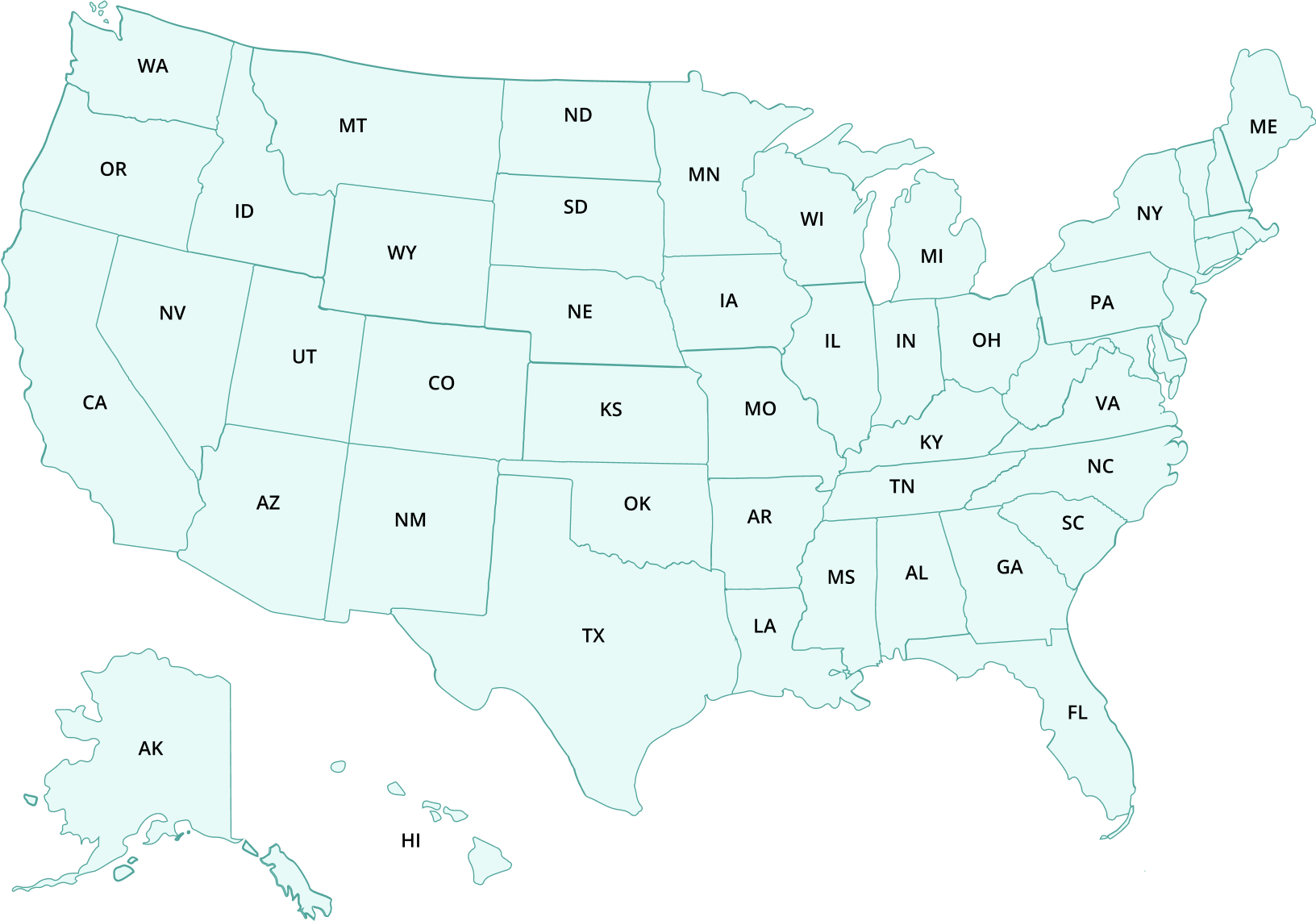Substance addiction is widespread globally and does not discriminate. Professionals in various niches such as attorneys, doctors, police officers, pilots, engineers, and others, may also find themselves trapped in the hooks of substance addiction even with their busy lives. The prevalence of such disorders is primarily due to work-related pressure.
Table Of Contents:
This driving force and the need to keep up productivity in the corporate line of work may lead to drugs. Addiction treatment for professionals ensures that professionals can get the help that they need. Rehab for professionals is designed to fit into the lifestyle of these corporate specialists, with systematic programs that identify the causes of addiction and proffers tailored solutions. Many rehab facilities offer addiction treatment for professionals according to their needs.
What are the underlying causes of substance abuse in healthcare professionals and people of other professions, and the role of professional rehab programs in the states?
Substance Abuse among Professionals: An Overview
The general responsibility to the public and exceeding pressures in the line of work coupled with stressful work conditions, limited human resources, and other business-related issues often lead corporate figures to use drugs to compensate for fatigue, boost energy, and to deal with underlying physical, emotional, and mental problems. As a result, substance abuse in healthcare professionals is on the rise, as reported, and many often lead to substance-induced impairment.

Consistent with research, many healthcare and corporate professionals use substances such as stimulants, opiates, tobacco, anxiolytics, inhalants, sedative-hypnotics, tranquilizers, alcohol, and others habitually, without the knowledge of colleagues, family, spouse, friends, and close relatives. Medical professionals admitted being asked for psychoactive prescription medications by colleagues. There is limited research on the impact of addiction on professionals and the minimal attention given to social workers and professionals in this category.
However, adequate and consistent data proves that addiction in professionals is as high as it is with people in other fields. For example, substance abuse is prevalent in approximately 10% of nurses. Another report estimated that one in every five nurses in the United States suffers from one chemical dependency or the other. This puts patients in harm’s way and may affect the reputation of the health facility.
The problem with substance use disorder among professionals is that it can cause hazards at the workplace, lost productivity, absenteeism, increased workplace accidents, and significant health issues. Professionals have been found to have extremely high rates of substance abuse. Here are some of the professionals and industries with the highest rates of professional substance abuse.
Professions That Pose a High Risk of Addiction are:
- Healthcare professionals
- Pilots
- Athletes
- Military
- Hospitality workers
- Legal Practitioners
- Entertainment professionals
- Management professionals
- Firefighters
- Sales professionals
- Construction workers
How Common is Substance Abuse Among Professionals?
Many professions demand long hours of work with high levels of physical and mental stress that often takes a toll on the individual. Odd working hours, unfavorable conditions, stress, trauma, and other health issues contribute to the use of substances by professionals.
For example, at least 4.4% of healthcare workers have a drinking problem. Another research showed that 69% of medical practitioners had misused psychoactive prescription drugs at least once in their line of duty. Dr. Peter Grinspoon, in his book titled ‘Free Refills,’ gave the reason for the rise in drug addiction rate in physicians and nurses from 10% to 15%. In this book, he revealed that the primary reason for this escalating problem is the ease of access to opioids and other psychoactive drugs. A typical historical example is William Stewart Halsted, a recognized pioneer of modern American Surgery who had a cocaine addiction as far back as the twentieth century. As prevalent as substance addiction is in the healthcare industry, other professions also have distinguishably high rates.
Healthcare Professionals
Medical practitioners bear the brunt of saving lives daily. The pressure of perfection can be overwhelming, especially with highly long call hours and the mental exhaustion these professionals face. A Daily Beast article showed that doctors are more likely to become drug addicts than their patients. The most probable reason physicians may develop drug addiction is primarily due to the stress of the job, unlimited access to these prescription medications, and the need to manage physical and mental pressure. In addition, a 2013 article showed that doctors turn to drugs to relieve physical and emotional pain.

Pilots
There have been numerous publications on the drug trends in the aviation sector, and reports have shown an upward trend in illicit drugs, OTC antihistamines, THC, and active formulas in sleep medications. These medications are attributed to on-the-job stress and psychological effects such as anxiety, depression, isolation, burnout, etc.
Athletes
Performance-enhancement Drugs (PED), steroids, pain meds, and doping are prevalent among athletes. The use of these drugs allows the athlete to train harder and surpass their limits. Unfortunately, many of these medications are addictive and cause significant health issues later in the future.
Military Personnel
The military is one of the most challenging jobs in the world, and the hazards are significant. For example, reports show that 1 in every 5 veterans have a substance use disorder. In addition, those with PTSD and other mental illnesses that are typical with the job often find themselves using substance abuse as a coping mechanism.
Hospitality Workers
The National Survey on Drug Use and Health reported in 2015 that hospitality workers in food services and accommodations had the highest rates of previous month illicit drug use at 19.1% and substance use disorder at 16.9%. This is due to exposure to stress and the pressure to keep up with very high expectations.
Legal Practitioners
According to a 2016 survey of 13,000 lawyers, at least one in every five was diagnosed with a drinking problem. This is reported to be a coping mechanism often adopted by young lawyers who have practiced for less than ten years.
Entertainment Professionals
The world of performing arts has always been closely associated with substance abuse. This often happens amid self-discovery and reinvention to blend into the artistic lifestyle. At least 14% of artists admitted to the previous month’s drug use, while 11.5% reported alcohol abuse. The escalating substance abuse in the art industry is due to the popularity of these habits and pressure to reinvent and stay relevant.
Management Professionals
This refers to CEOs, CFOs, and professionals in managerial positions in an organization. People in this category oversee and supervise many employees and contracts, which can be overwhelming. In a recent report, 12.1% of management professionals admitted to abusing drugs in the previous month.
Firefighters
As the first line of response to fire and environmental hazards, some firefighters often develop anxieties, depression, and mental issues over time, leading them to self-medicate. In a study, 50% of firefighters were reported to participate in binge drinking.
Sales Professionals
With the extremely high pressure to close deals and meet company targets, many sales representatives turn to substance abuse to deal with the emotional impact of not meeting demands. SAMHSA reported that 10.9% of salespersons in leasing, real estate, and other professional sales and retail positions said the use of drugs the previous month.
Construction workers
Construction workers reported the second-highest alcohol consumption rate, with at least 15% dealing with substance abuse. In addition, workplace injuries are widespread with construction workers, leading them to seek prescription opioids for pain and health issues. Research conducted by the Massachusetts Department of Public Health from 2011 to 2015 showed that 26% of deaths by opioid overdose were employees of mining and construction firms.
5 Best Rehab Programs for Professionals
Many facilities offer addiction treatment for professionals, depending on the severity and the type of addiction. Those who seek rehab for professionals have the luxury of choosing from an inexhaustible list of professional rehab facilities. Whether it’s an alcohol rehab for professionals or addiction treatment for physicians, there is an expanse of rehab for professionals and program types tailored to the client.
Here Are Five of the Top Rehab for Professionals:
Providence Treatment, Media, PA
As a long-standing rehab for professionals, Providence’s Professional program has catered to the needs of professionals struggling with substance addiction. The health professionals recovery program has a track record of excellence and is handled by expert clinicians. The programs offered include Ambulatory detoxification, intensive outpatient, day treatment, general outpatient programs, and more. Addiction treatment for professionals includes psychological testing, individual, couples and family therapy, spiritual direction and assessment, acupuncture, dietary/nutritional counseling, and aftercare support.
Harmony Ridge Recovery, Walker, WV
This rehab for professionals in West Virginia offers a wide range of substance abuse treatment for corporate professions such as dentistry, physicians, licensed professionals, nurses, pilots, executives, police officers, and others. Harmony Ridge offers Medication-assisted, intensive short-term treatment, access to workspace and communications, privacy, and more. The health professional’s recovery program is tailored to the type of addiction, mental and physical health conditions, and severity. Forms of treatment include counseling, family therapy, Cognitive behavioral therapy, Dialectical behavioral therapy, dual diagnosis, trauma therapy, stress management techniques, and others.
Cornerstone of Recovery, Louisville, TN
Cornerstone Center offers addiction treatment for physicians, pilots, and other professions. Their rehab professionals program structure is developed to tackle addiction at all levels. Their services include pain management, family therapy, medical detox, experiential therapy, aftercare support, etc. Their customized programs may last between 30-90 days, depending on the needs of the client. The alcohol rehab for professionals also conducts frequent assessments to analyze the progress and health condition of clients.
Talbott Campus Recovery, Atlanta, GA
The professional program structures at Talbott are developed to accommodate professionals that need help with addiction and still have work obligations that have to be met. With over 6,000 professional treatments and a 40-year history, the facility is one of the most renowned rehabs for professionals. Talbott programs cater to pilots, medical professionals, psychologists, surgeons, pharmacists, attorneys, physicians, etc. The treatment services offered include intensive outpatient programs, detoxifications, stabilization, and partial hospitalization.
Seaside Palmbeach, Palm Beach Shores, FL
The rehab for professionals offers targeted treatment for professional athletes who may be addicted to pain medications and other forms of drugs due to career-related injuries. Chronic pain is managed through holistic treatment and alternatives to medication such as acupuncture, meditation, massage, reiki, yoga, and more. The clinicians at the facility incorporate traditional methodologies with modern and consistent methods of pain relief. The facility offers multiple levels of treatment such as inpatient, residential treatment program, partial hospitalization program, intensive outpatient program, family program, and others. Whether it’s a luxury rehab for professionals or conventional alcohol rehab for professionals, the Seaside Palm Beach is well equipped and strategically located to quicken recovery.
What Happens in Addiction Treatment Programs for Professionals?
Professionals can still live a drug-free life by choosing the right rehab for professionals. These rehabilitation facilities offer an extensive number of customized health care services that are beneficial for all levels of addiction, with accurate physical, mental and emotional assessments that address the root cause of the addiction to design the most appropriate and effective way to deal with the problem.
Some of the Programs Offered at These Rehabs Include:
Long-term Residential Treatment
The long-term treatment is a 24-hour live-in medical service with a duration of six to twelve months. The treatment is very structured with a focus on reintegration for severe cases of addiction. The program addresses behavior, constructs, belief systems, destructive patterns, and other problems that lead to addiction or relapse.
Short-term residential Treatment
This intense but shorter program is primarily based on a 12-step approach and may last for three to six weeks. The hospital-based program is also closely followed by participation with self-help groups such as an outpatient AA treatment program as aftercare. Participation in this group is essential to avoid the risk of relapse.
Outpatient Treatment Programs
There are various intensities and types of outpatient addiction treatment for professionals. Outpatient programs are primarily for mild to intermediate levels of severity and do not require the client to live in the facility. As a result, they are less expensive than inpatient treatment and yet very effective. Some outpatient services also target underlying mental disorders as well as substance abuse.
Individualized Drug Counseling
One-on-one drug counseling allows a deeper understanding of the root cause of addiction, revolving around trauma, family, employment status, relationships, mental, physical, and emotional health, as well as other unexcavated aspects. Counseling utilizing the 12-step strategy and helps to maintain abstinence from drugs.

Group Counseling
Group counseling therapy reinforces social skills and promotes a drug-free lifestyle by providing a supportive and enabling peer group to discuss their experiences and challenges with addiction. In addition, group counseling fosters positive behavioral adjustments and seamless recovery.
Here Is a List of Therapies Used in Addiction Treatment for Professionals:
- Cognitive Behavioral Therapy (CBT)
- Contingency Management (CM)
- Matrix Model
- Rational Emotive Behavior Therapy (REBT)
- Motivational Interviewing (MI)
- Dialectical Behavioral Therapy (DBT)
- 12-Step Facilitation
Other holistic therapy options include:
- Yoga therapy
- Art and music therapy
- Acupuncture
- Spa therapy
- Meditation
Key Components of Professional Recovery Program
Mental health is critical, and maintaining a good balance of physical and mental health while recovering from addiction is very important. However, the drive to achieve a meaningful life and a drug-free existence is hinged on individual choices and ideologies that must be followed.
Here Are a Few Fundamental Components and Principles of Recovery:
- Empowerment: Every client has the authority to decide what is best for their lives, and the recovery program is designed to support, educate, and equip clients with everything they need for the recovery process.
- Self-Realization: The route to recovery is submerged in self-discipline, discovery, and redirection. Carving out a path to complete freedom and independence is the general direction. This can be achieved by taking responsibility for actions and identifying coping mechanisms, and setting goals.
- Holistic: This means body, mind, and spirit, as well as outward projections. Recovery takes over every aspect of one’s life and being. Holistic support is routed into education, physical and mental health, career, family support, and others.
- Peer Support: The invaluable support of a progressive peer group is encouraging and highly engaging as it provides a sense of belonging and validates one’s struggles.
- Continued Growth: Learning from experience is an essential part of the recovery process. It is the understanding that there will be setbacks, but they do not define the individual. It emphasizes that recovery isn’t immediate but rather a step-by-step course.
- Unique Approach: Recovery is a different story for everyone. The recovery structure takes cognizance of individuality, capacities, coping abilities, and the general strength of the individual. With proper assessment and lessons learned, the process helps to build resilience, trust, improved interactions and relationships with loved ones.
- Respect: Dissolving all forms of judgment, stigmatization, and discrimination is vital for a full recovery. Respect for one’s self and others is a significant step toward long-term healing.
- Hope: Promoting hope is one of the most critical components that the recovery program is based on. It is the catalyst to complete recovery. Hope is found in counseling, motivational messages, actions, and words of family, peers, guardians, friends, and others.

How Much Do Professional Programs Cost?
Rehab professionals program covers all forms of addiction and may vary in cost depending on several factors such as:
- The location of the professional rehab facility
- The length of the addiction treatment
- The quality of amenities offered by the rehabilitation facility
- The type of substance abuse treatment needed
These factors are related to the professional rehab facility. However, some other aspects depend on the level of services required by the patient, as some patients may require more intensive treatment and management than others.
The Factors That Affect the Cost for Patients Include:
- Mental health status
- Environmental factors
- History of drug use or relapse
- What type of substance used
- The severity of the addiction
- Method of treatment administration
- Physical health condition
- Medications administered
- Length of time used
Here Are Possible Expenses for Addiction Treatment for Professionals:
- Detox: The use of medication-assisted detox (Methadone, Buprenorphine, Benzodiazepines) may cost $1,000 or more daily, except with access to publicly-funded opportunities and insurance. A whole year of methadone treatment costs $4,700.
- Outpatient Cost: Rehabilitation as an outpatient often costs lesser than Inpatient treatment even though they take more extended periods. Outpatient programs cost $5,000 to $ 8000 for three months, while some outpatient facilities that are publicly funded are accessible for those who are eligible.
- Inpatient Cost: The cost of this program is significantly high and may also depend on the amenities. A 30-day program may cost $5,000 to $25,000. Luxury rehabs are exceptionally equipped for the affluent and may cost as much as $100,000 for a 30 to 90 days stay. Insurance coverage may help reduce costs in this case.
- Aftercare: Services such as aftercare are primarily free. For instance, Alcohol Anonymous (AA) support groups are completely free and enable patients to maintain sobriety. These peer groups have specific meeting schedules. However, one-on-one counseling may cost $75 to $150 per sitting.
Help is Just a Phone Call Away
Rehabilitation facilities for professionals play a significant role by offering tailored addiction recovery treatment options to corporate professionals in various fields. The structured treatment also considers these clients’ personal needs and work requirements while developing a treatment program that works for them.
Getting help for professional substance addiction is easier than ever – just contact professionals to start the recovery!
Hope Without Commitment
Find the best treatment options. Call our free and confidential helpline
Most private insurances accepted
Find Drug Rehabilitation Centers Near You Anywhere In the US
Addiction Resource team has compiled an extensive list of the top drug rehabilitation facilities around the country. Click on the state you are interested in, and you'll get a list of the best centers in the area, along with their levels of care, working hours, and contact information. Haven't found the rehab you need? Call the toll-free helpline below for professional assistance.

- Alabama
- Alaska
- Arizona
- Arkansas
- California
- Colorado
- Connecticut
- Delaware
- Florida
- Georgia
- Hawaii
- Idaho
- Illinois
- Indiana
- Iowa
- Kansas
- Kentucky
- Louisiana
- Maine
- Maryland
- Massachusetts
- Michigan
- Minnesota
- Mississippi
- Missouri
- Montana
- Nebraska
- Nevada
- New Hampshire
- New Jersey
- New Mexico
- New York
- North Carolina
- North Dakota
- Ohio
- Oklahoma
- Oregon
- Pennsylvania
- Rhode Island
- South Carolina
- South Dakota
- Tennessee
- Texas
- Utah
- Vermont
- Virginia
- Washington
- West Virginia
- Wisconsin
- Wyoming
Page Sources
- Kenna, G. A., & Lewis, D. C. (2008). Risk factors for alcohol and other drug use by healthcare professionals. Substance abuse treatment, prevention, and policy, 3, 3. https://doi.org/10.1186/1747-597X-3-3
- Warren, L., Feit, M. D., & Wells, J. (2011). Substance abuse among professionals: Limited research on substance-abusing social workers. Journal of human behavior in the social environment, 21(7), 803-812. https://www.tandfonline.com/doi/abs/10.1080/10911359.2011.616753
- Dunn, D. (2005). Substance abuse among nurses—defining the issue. AORN Journal, 82(4), 572-596. https://www.sciencedirect.com/science/article/abs/pii/S0001209206600288
- Monroe, T., Pearson, F., & Kenaga, H. (2008). Procedures for handling cases of substance abuse among nurses: A comparison of disciplinary and alternative programs. Journal of Addictions Nursing, 19(3), 156-161. https://www.tandfonline.com/doi/abs/10.1080/10884600802306024
- Bush, D. M., & Lipari, R. N. (2015). Substance use and substance use disorder by industry. The CBHSQ Report. https://www.samhsa.gov/data/sites/default/files/report_1959/ShortReport-1959.html
- Likely, E. A. M. A. M. (2014). Drug Abuse Among Doctors: Easy, Tempting, and Not Uncommon. https://gme.med.ufl.edu/files/2014/02/Drug-Abuse-Among-Doctors.pdf
- The Daily Beast, The Secret World of Drug-Addict Doctors, April 24, 2014, https://www.thedailybeast.com/the-secret-world-of-drug-addict-doctors
- La Times, Op-Ed: Up to 15% of doctors are drug addicts. I was one of them, https://www.latimes.com/opinion/op-ed/la-oe-grinspoon-addicted-doctors-20160605-snap-story.html
- Bush, D. M., & Lipari, R. N. (2016). Substance use and substance use disorder by industry. April 16, 2015, https://www.samhsa.gov/data/sites/default/files/report_1959/ShortReport-1959.html
- American Bar Association, Midyear 2018: Panel to examine lawyer substance abuse, mental health – and solutions, February 01, 2018, https://www.americanbar.org/news/abanews/aba-news-archives/2018/02/midyear_2018_panel/
- American Society of Safety Professionals, National Crisis: Opioid Abuse in the Construction Industry, August 28, 2018, https://www.assp.org/news-and-articles/national-crisis-opioid-abuse-in-the-construction-industry
- Substance Abuse and Mental Health Services Administration. (2018). Disaster Technical Assistance Center Supplemental Research Bulletin First Responders: Behavioral Health Concerns, Emergency Response, and Trauma. https://www.samhsa.gov/sites/default/files/dtac/supplementalresearchbulletin-firstresponders-may2018.pdf
- National Survey on Drug Use and Health, 1 IN 15 VETERANS HAD A SUBSTANCE USE DISORDER IN THE PAST YEAR, May 07, 2015, https://www.samhsa.gov/data/sites/default/files/report_1969/Spotlight-1969.html
- Pemberton, M. R., Forman-Hoffman, V. L., Lipari, R. N., Ashley, O. S., Heller, D. C., & Williams, M. R. (2016). Prevalence of past year substance use and mental illness by veteran status in a nationally representative sample. SAMHSA Center for Behavioral Health Statistics and Quality, November. https://www.samhsa.gov/data/sites/default/files/NSDUH-DR-VeteranTrends-2016/NSDUH-DR-VeteranTrends-2016.pdf
- National Transportation Safety Board, Drug Use Trends in Aviation: Assessing the Risk of Pilot Impairment, Adopted September 09, 2014, https://www.ntsb.gov/safety/safety-studies/Documents/SS1401.pdf
- Reardon, C. L., & Creado, S. (2014). Drug abuse in athletes. Substance abuse and rehabilitation, 5, 95–105. https://doi.org/10.2147/SAR.S53784



